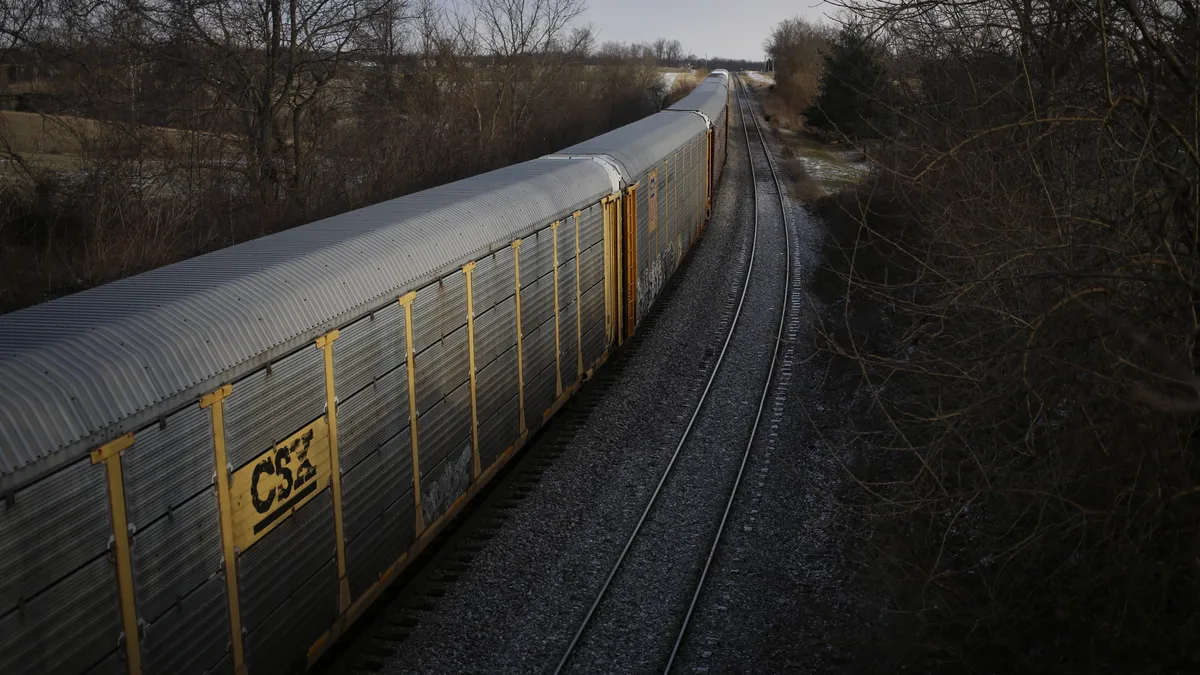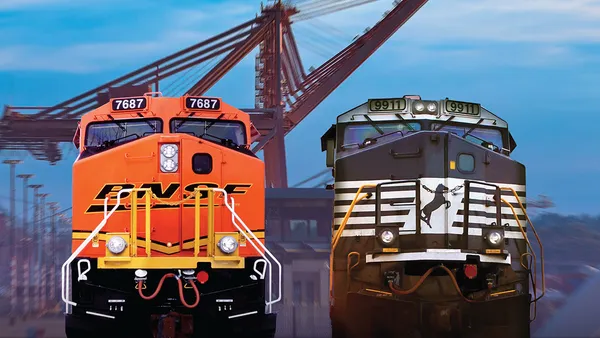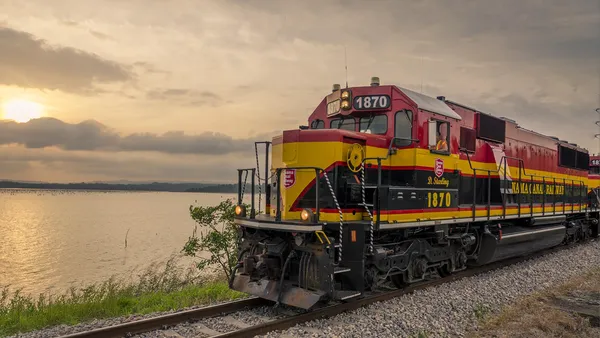Dive Brief:
- Labor constraints and rising attrition are impacting network performance on East Coast railroads, executives said on Q3 earnings calls last month.
- Norfolk Southern saw attrition rates accelerate over the past two quarters, and the railroad has had trouble onboarding conductors and other workers despite company efforts to ramp up hiring. Hiring and retention have become "increasingly challenging, especially in some of our more critical locations," said COO Cindy Sanborn, adding the tight labor supply has had "an impact on our network."
- At CSX, fluidity and on-time performance declined as "a result of our having an extremely difficult time getting people to come work for us," said CEO James Foote.
Dive Insight:
Railroads are struggling to replenish their workforces after cutting thousands of positions at the start of the pandemic. Despite hiring efforts, employment numbers in 2021 remain below what they were last year — when many of the furloughs and layoffs took place.
Railroad employment hasn't recovered to pre-pandemic levels
Now that intermodal demand has rebounded to a record high, the lack of labor is affecting capacity and service. Train speed and terminal dwell at Norfolk Southern remained flat in Q3 in part due to hiring challenges, according to Sanborn. The numbers "do not reflect performance at desired levels," she said, noting the company had 7% fewer workers this quarter compared to a year ago.
The Surface Transportation Board sent CSX a letter in mid-October noting federal regulators have received a steady stream of complaints from shippers about "substandard performance," including instances of missed switches, unfilled car orders and extended transit times.
In a letter replying to the STB, Foote noted CSX still has the lowest dwell among all Class I railroads, and has "the highest velocity in the East." But, in both the letter and on recent earnings calls, he said performance is still not where it should be.
"There was more business out there this quarter, there has been more business out there throughout this year that we could not handle," he said on the Q3 earnings call. "The primary reason for that is our inability, like everyone else in the world right now, to ramp up our workforce coming out of the steep declines of the early phases of the pandemic."
Part of the problem, railroads say, is above average attrition especially during the onboarding process. Norfolk Southern vastly expanded its hiring pipeline, but trainee classes are smaller and experiencing higher rates of attrition, according to Sanborn. Foote said CSX is "seeing high attrition rates during the on-boarding, training and first year of service for conductors," in his letter to the STB.
Both railroads said they've gone to great lengths to expand the hiring pipeline and bring in and retain more workers, and that they've seen some progress after boosting pay and adding other incentives. To get around labor constraints, Norfolk Southern is also relying on bigger trains to add capacity without the need for more crew.
"No one ever gave me a heads up that says, 'by the way when you want to hire somebody, nobody is going to want to work for you,'" said Foote. "This is a phenomenon that nobody saw coming, and it is a phenomenon that [affects] everybody in the supply chain."













